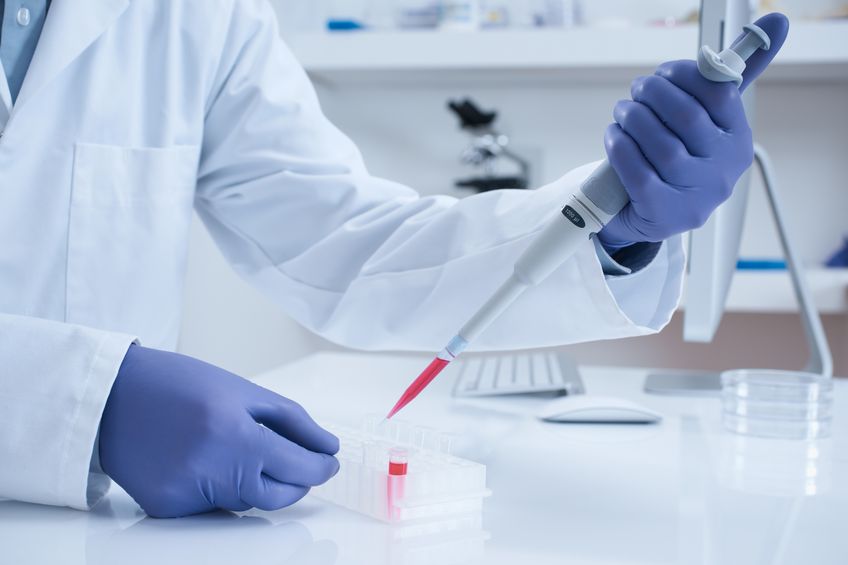For many scientists, few things are more mundane, monotonous, and painfully synonymous with lab research than pipetting. Draw, squirt, eject. Draw, squirt, eject. Sigh. Whether Day 1 in your first lab or deep into your research career, you will be pipetting. But no matter how mind-numbing pipetting often feels, there is skill, experience, and experiment-specific technique involved—as well as ruefully relatable stories. Quartzy’s resident scientists share their pipette tips, wit, wisdom, and anecdotes.
Melissa, Life Science Product Specialist
Pipette Tip: My graduate research was qPCR based, for which we used 96-well plates. I started my experiments at my work, using an incredible electronic pipette with repeat dispensing capabilities. About 70 percent through my project, I had to transfer my experiments to my school, which had, well—less fancy equipment. I was using a single channel pipette to fill all 96 wells! Setting up one plate took forever, and to keep track of where I was on the plate, I would recite what well I was pipetting into over and over again. I sounded like a deranged Bingo announcer. Right before I set up the very last plate of my project, I ran into a lab tech, who graciously lent me his own manual multichannel pipette. I had never been so happy to see something in my life!
Dylan, QA Analyst
Pipette Tip: After having messed up enough DNA extractions and PCRs that had to be done and re-pipetted all over again, my only real piece of advice for pipetting is to find the right headspace to be in while pipetting. It was such a tedious task that my brain actively sought out distractions, so I needed music to center my focus, and also opted to take the latest possible hood shift to avoid social distractions as well. It sounds like a lonely existence, but your NanoDrop results and successful PCRs will be worth it.
Nicole, Business Development
Pipette Tip: Working in a QC lab, I used to spend all day doing hundreds of assays by hand. Just straight up pipetting stuff from one tube to another, over and over and over. The one piece of advice I have is to invest in a set of pipettors that won’t give you carpal tunnel syndrome. I’ve probably tried every single pipettor out there, and my favorite was the Rainin LTS line.
Chris, Life Science Product Specialist
Pipette Tip: I used to get pretty distracted while pipetting into 96-well plates to do luminescence assays. During undergrad, my lab manager told me I should use an index card to provide some visual contrast and help keep my place. You take an index card and put it under the plate. Because the assay plates are transparent—sorry, no opaque plates for this trick—you can see where the card is. If you’re on the first row, slide the card down to the second row, “highlighting” the row you’re pipetting into. When you finish pipetting said row, slide the card down and repeat. Couple that with a 96-well plate diagram in you lab notebook and clearly labeled stock solutions—you’ll never lose your place again!
George, Marketing
Pipette Tip: Don’t buy a $500,000 Tecan liquid-handling robot unless you have someone to program it. I worked in a lab that thought we could increase our colony screening throughput by buying one of these. It sat in various states of disarray for over a year before someone competent had the time to program it.
Aline, Life Science Product Specialist Manager (former wine lab manager)
Pipette Tip: Wash your pipette tips! Hardly any wine analysis requires sterile pipetting. We really liked using repeater tips to make blends, run assays, dose juice, etc. Set up your bottles, suck up the wine, and bam bam bam—blend’s complete. Being a resource-limited lab, we saved a huge amount of money by washing our tips and reusing them. When you’re done, simply throw the tips in a Tergazyme dilution and sic your best intern on the dishes. Make sure to run an internal standard on semi-sensitive assays so you know when to throw those reused tips out.
Adam, co-founder
Pipette Tips:
- My most common frustration when pipetting was losing track of where I was when pipetting a series of fluids, in sequential order, into many tubes lined up in a rack. A very easy trick, but one that took me longer than it should have to learn, is to move the tube containing the most recently dispensed fluid into the row above or below the row containing the tubes that have yet to receive said fluid.
- Also, it’s really important to use the correct pipette for the amount of fluid you mean to dispense. You shouldn’t use a p200 to dispense 1µl of fluid.
- When pipetting genomic DNA, cut the tips off your normal p200 tips, or buy wide-bore tips.
Matt, Customer Success Associate
Pipette Tip: If possible, invest in a great set of pipettes. When I worked in a lab during school, I spent hours manually pipetting with what were likely decades-old single-channel pipettes. When I started working in a pharmaceutical lab, we used these incredible multichannel pipettes from Rainin that automatically calculated compound dilutions. My mind was absolutely blown when I first used them. They may be pricey, but the amount of time they save in any lab are well worth the upfront cost.
John, Life Science Product Specialist
Pipette Tip: One of my summers in the lab was marked by a ton of pipetting: RNA/DNA extractions, qPCR, and plenty of other pipetting-heavy experiments. Over time, and many presses of the pipette plunger, my wrist started to hurt! So my tip is an ergonomic one. If you’re in a similar situation, learn to pipette with your other hand! Switching it up helped me ward off repetitive-use injuries and got me a little bit closer to ambidexterity.
Jennifer, Life Science Product Specialist
Pipette Tip: Reevaluating the order in which you pipette liquids can help save time and plastic pipette tips (for eco-friendly scientists). A couple of times a year we had to genotype mice that we were breeding, which meant pipetting 100 different mice DNA for gel electrophoresis. We would pipette 1uL dots of loading dye onto parafilm for all 100 samples using the same pipette tip, and and then use seperate tips to pipette our actual DNA samples, mix them with the dye on the parafilm, and load into the gel. Thus, we were using half the amount of tips, saving time, money, and the environment.
Do you have any personal pipette tips or tales? Leave a comment or send us an email!
Quartzy is the world’s No. 1 lab management platform. We help scientists easily organize orders, manage inventory, and save money. We’re free and always will be. Visit Quartzy.com or reach out at info@quartzy.com.
Interested in writing for The Q? Send us an email!
Share this:

Greg Schindler
Greg has a BA from Stanford (English/Football) and MS from Oregon (Journalism). He's our Director of Marketing and Pastries.
